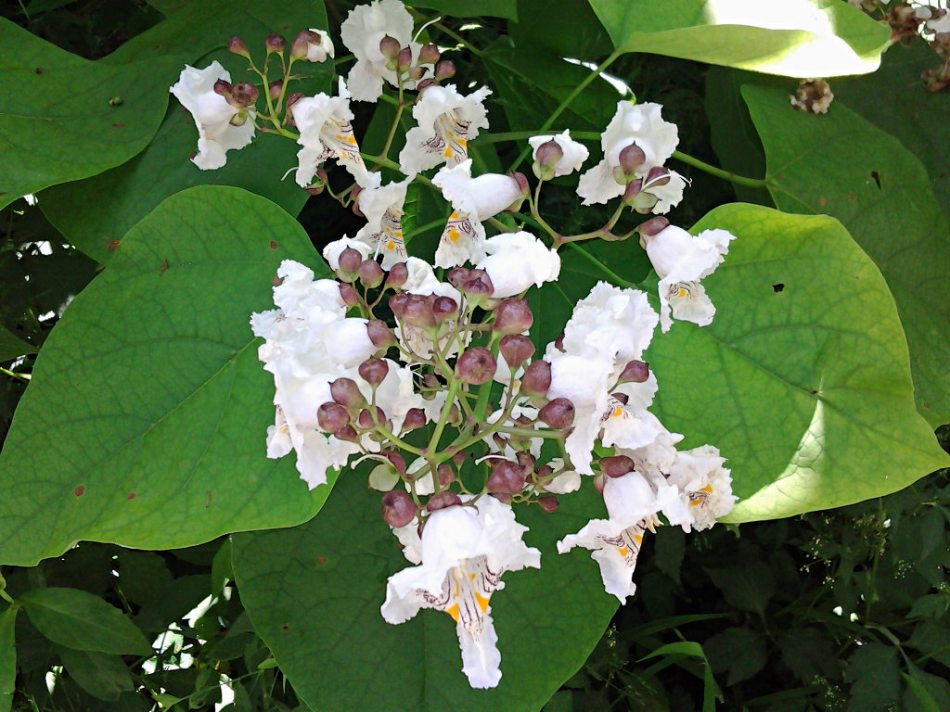Also known in Pittsburgh as “Indian stogie” for its long, cigar-like seedpods. The combination of pyramids of white flowers and large, heart-shaped leaves marks the tree unmistakably as a Catalpa. But which one? There are, confusingly, two very similar species of Catalpa in our range, neither one of them strictly native. This one, the Southern Catalpa, is the only one recorded in Allegheny County; there is also a Northern Catalpa (C. speciosa) found in some of the suburbs.
This is very much an urban tree, planted originally as an ornamental, but now a very common weed tree in the city. It rapidly becomes less common as we get further out into the suburbs, and is completely unknown in Butler and Indiana Counties (where, however, the Northern Catalpa is sometimes seen). This tree was blooming in Frick Park in late June.
Gray describes the genus and the species:
CATALPA Scop. CATALPA. INDIAN BEAN. Calyx deeply 2-lipped. Corolla bell-shaped, swelling; the undulate 5-lobed spreading border irregular and 2-lipped. Fertile stamens 2, or sometimes 4; the 1 or 3 others sterile and rudimentary. Capsule very long and slender, nearly cylindrical, 2-celled, the partition at right angles to the valves. Seeds winged on each side, the wings cut into a fringe. —Trees, with ovate or cordate and mainly opposite leaves. (The aboriginal name.)
C. bignonioides Walt. A low much branched tree, with thin bark; corolla smaller (2.5-4 cm. long), thickly spotted, with oblique limb and entire lower lobe; capsule much thinner. (C. catalpa Karst.)—Naturalized from N. Y, southw.; indigenous on the Gulf coast.



2 responses to “Catalpa (Catalpa bignonioides)”
Can I start catnip from a cutting?
I have one of these trees in my yard & I live near Morristown, NY